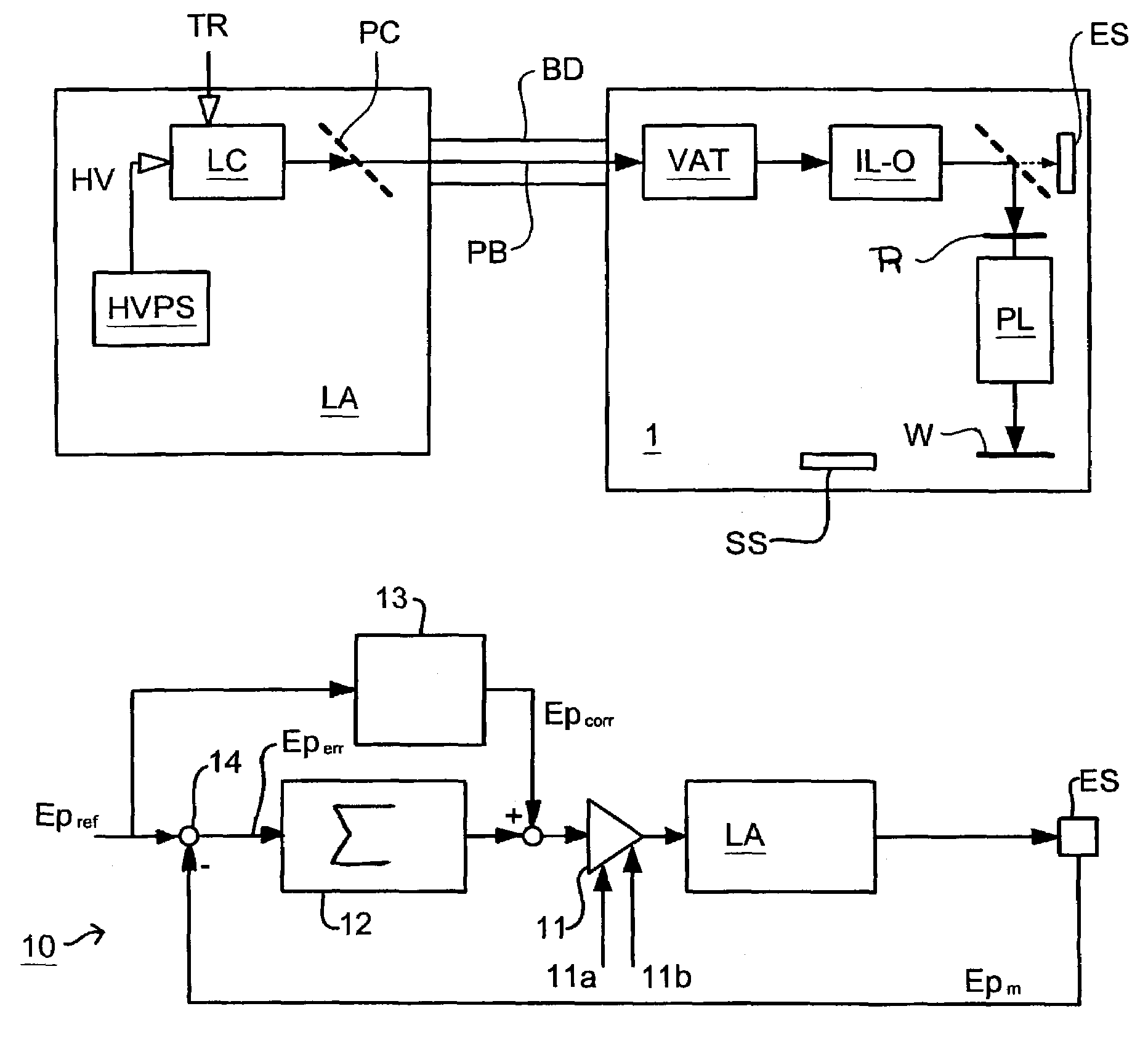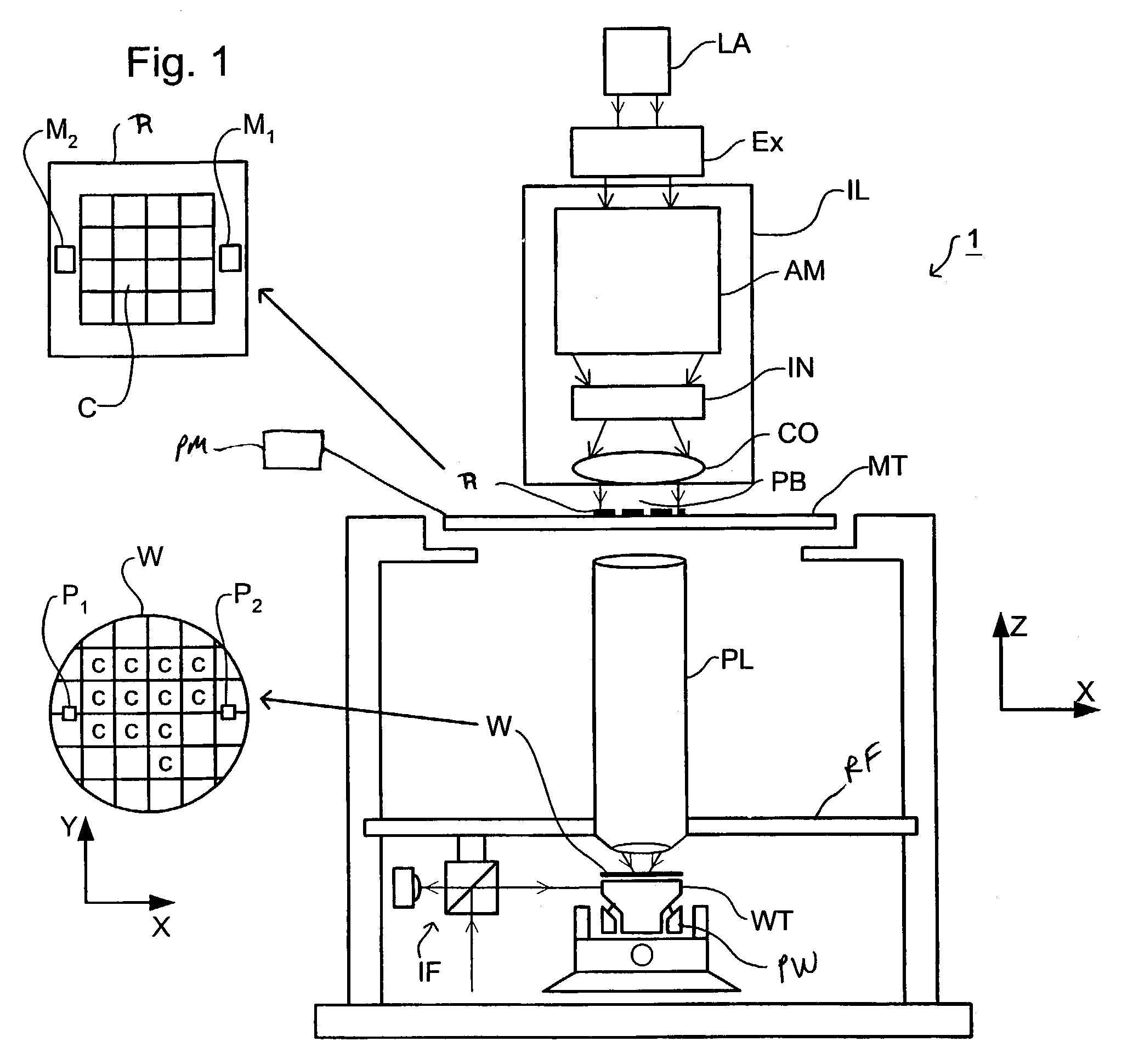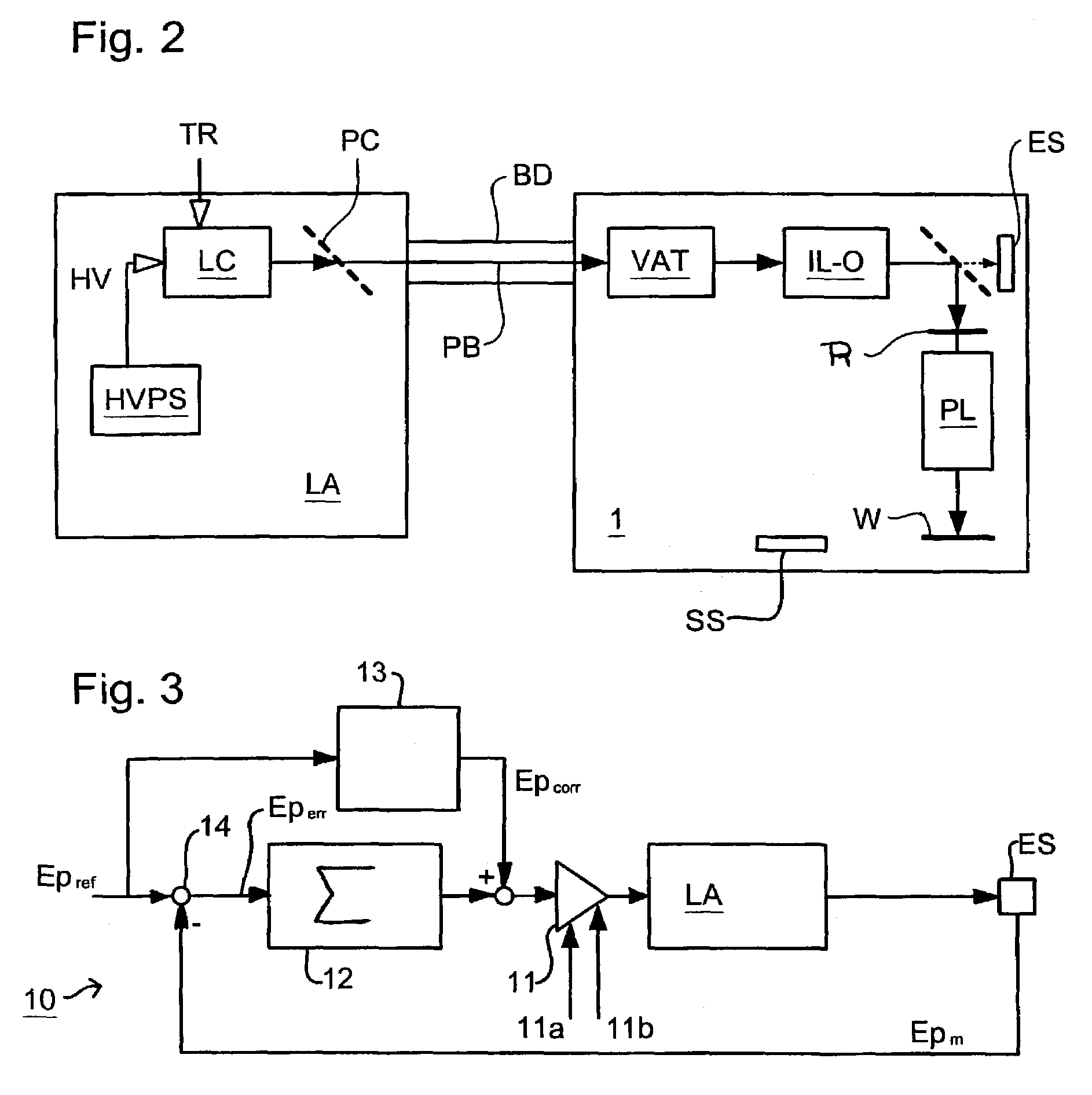Lithographic apparatus, device manufacturing method, performance measuring method, calibration method and computer program
a technology of lithographic projection and manufacturing method, which is applied in the field of lithographic projection apparatus, a device manufacturing method, a performance measurement method, a calibration method and a computer program, can solve the problems of large transient oscillation of pulse energy, complex control system, and complex devices used in excision lasers at present, and achieve the effect of more accurate dose control
- Summary
- Abstract
- Description
- Claims
- Application Information
AI Technical Summary
Benefits of technology
Problems solved by technology
Method used
Image
Examples
first embodiment
[0045]FIG. 3 depicts the integrated control system 10 of the present invention. In this system the variable attenuator VAT is set to a fixed degree of attenuation and is omitted from the drawing for clarity. The control system 10 has as input a desired pulse energy Epref, acting as a pulse energy set point. From this subtractor 14 subtracts the pulse energy Epm, of the previous pulse as measured by energy sensor ES to give the pulse energy error Eperr, and supplies its output to a simple summator 12. An amplifier 11 applies a gain and offset to the summated pulse energy error Eperr, representing the HV-Ep transfer function. The output of amplifier 11 determines the high voltage applied to the laser LA and hence the output pulse energy. The summator 12 may be implemented as a backward Euler discrete time approximation of an integrator Tz / (z−1), with a normalized gain of 1 / T (due to the repetition rate independence of the radiation source model). The above described components form a ...
second embodiment
[0054]the invention has an integrated control system as shown in FIG. 5. This control system uses a controller 20 to provide a closed loop feedback control based on the pulse energy as measured by the energy sensor ES. Controller 20 operates a control strategy incorporating an algorithm to calculate the target energy per pulse to deliver the desired dose at substrate level and to compensate for errors in previous pulse energies in subsequent pulses as well as an algorithm to calculate the excitation voltage HV that must be applied to the laser cavity LC to deliver a pulse of required energy. The control algorithm may also incorporate feed-forward algorithms to compensate for disturbance effects in the laser and predicted and other effects, e.g. due to lens heating, occurring downstream of the energy sensor ES. The controller 20 may also control the variable attenuator VAT. The variable attenuator VAT can be used when the required amplitude variation of Ep is large enough to cause th...
PUM
| Property | Measurement | Unit |
|---|---|---|
| wavelength | aaaaa | aaaaa |
| wavelength | aaaaa | aaaaa |
| wavelength | aaaaa | aaaaa |
Abstract
Description
Claims
Application Information
 Login to View More
Login to View More - R&D
- Intellectual Property
- Life Sciences
- Materials
- Tech Scout
- Unparalleled Data Quality
- Higher Quality Content
- 60% Fewer Hallucinations
Browse by: Latest US Patents, China's latest patents, Technical Efficacy Thesaurus, Application Domain, Technology Topic, Popular Technical Reports.
© 2025 PatSnap. All rights reserved.Legal|Privacy policy|Modern Slavery Act Transparency Statement|Sitemap|About US| Contact US: help@patsnap.com



